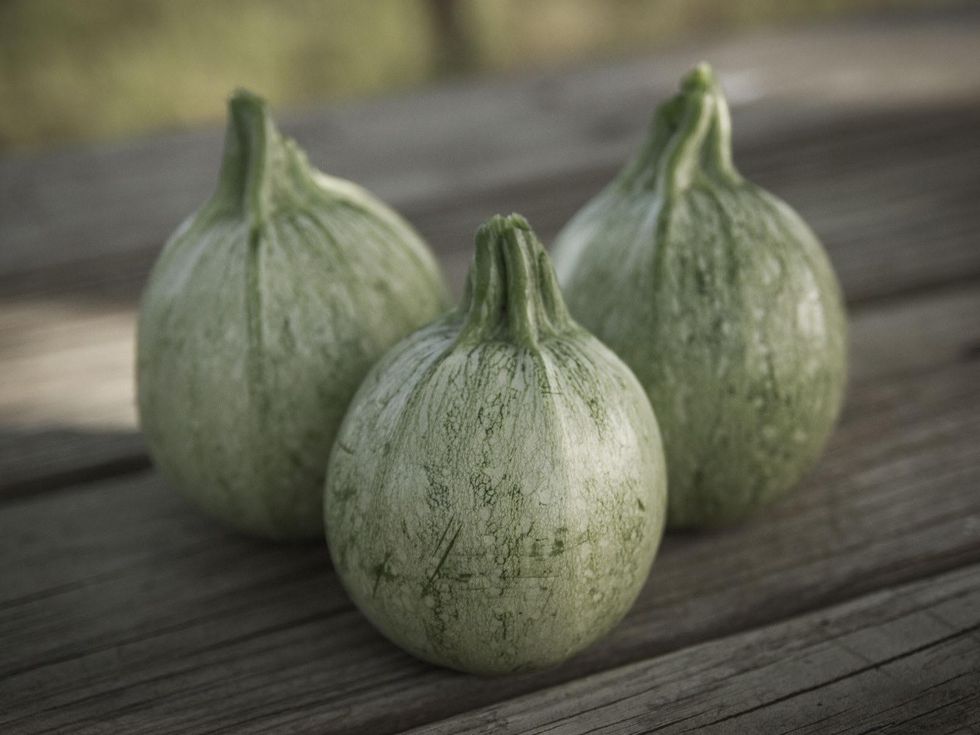The Farmer Diaries
Novice North Texas farmer takes his crop to market
I look forward to the arrival of uncomfortable, summer heat because it signals the start of picking season in farms and gardens throughout Texas.
All the work — the weeding, watering, fertilizing — has finally started to pay off. Green tomatoes are turning reddish orange. Beets are cropping out from the soil. Zucchinis are growing as large around as pythons if they're neglected for a day or two. Such abundance is a part of what excites gardeners and motivates them to endure the prerequisite work each spring in preparing a garden plot.
In my ongoing attempt to opt out of industrialized agriculture and declare food independence, this year looks like the closest yet for me in achieving my goals. I have a diverse lineup of fruits and vegetables growing on healthy plants that have been fortified by frequent rainfall this spring.
Greens being a category of vegetables that rarely incites cravings in anyone, $65 in two days is perhaps more than I could have hoped for.
I can now decide what I will eat for dinner just an hour ahead of time, walk out into my garden and pick about three out of every four ingredients. If I need an onion, I go get one; when I need a bunch of kale, I cut some. Need three carrots diced for stir-fry? I'll be right back.
What's more, the flavor and texture of such freshly picked produce is almost unrecognizable compared to produce from the grocery store. For this reason alone, I only eat melons, tomatoes, squash and cucumbers when they're in season and picked within 100 feet of my house. The imposters at the store just aren't worth buying.
Each year by the end of May, the harvest starts to trickle in: beets, potatoes, herbs and the occasional tomato. This year, I even harvested my first trial crop of wheat.
By mid-June, that trickle turns into a gushing stream that can't be contained. All kinds of squash — yellow, scallop, zucchini — are ready to pick all at once, and all the greens need to be picked before summer heat wilts them into bitterness.
Something has to be done with all that produce, and letting it rot in the garden just isn't an option. It has to be preserved, given away or sold. For me, mastering the art of canning is a goal for the future, and giving away produce isn't exactly the best business plan. So I decided to sell the bounty.
Going to market
With more kale, Swiss chard and collard greens than I could ever get around to eating, I set out on the first Sunday in June to test the local market. It was time to see how close I could get to making this hit-and-miss farming adventure into a full-time business venture. I loaded up two ice chests with all the greens that fit and set up a stand at Ann's Health Food Center in Waxahachie.
Ann's, which also has a branch in South Dallas, doesn't have enough traffic to support a bona fide produce section. But owner Matt Munchrath gets requests for produce from customers, so he allows local growers to come in whenever they can and sell what they have.
The real test will come later in the season when I start selling the flashier money-makers like melons and tomatoes.
Feeling too proud to peddle, I decided not to set a price. Instead, I let inquirers know that they were free to take what they wanted and pay what they wanted, even if they didn't want to pay at all. This allowed me to enjoy the loftier premise of promoting the benefits of local, sustainable agriculture, while still reaping a dividend on my hard work by accepting the generosity of others who appreciated my message and/or the organic produce.
After three hours, the bulk of the produce had been taken. Of the dozen or so who stopped by the stand, all but two paid; the two who didn't pay, I had virtually begged to take some kale. Some were generous with their payment; others were right on the money as to market value of their purchase. In the end, my gross income added up to exactly $20.40 — a nice reward for my effort, though still a long way from paying the bills.
But I'm not discouraged. A few weeks prior, I did pretty well at the Downtown Waxahachie Farmers Market, which sets up every Saturday morning on the historic downtown square. I took a smaller load of greens and netted over $45. Greens being a category of vegetables that rarely incites cravings in anyone, $65 in two days is perhaps more than I could have hoped for.
The real test will come later in the season when I start selling the flashier money-makers like melons and tomatoes.
My other obstacle is to overcome my reluctance to ask for a fair price. There's some sort of not-for-profit spirit in me that makes me feel uncomfortable when I'm forced to market my wares. But I also want the act of sustainable farming to be treated with respect.
Besides, as I quickly learned, asking customers to set their own price places a greater burden on them. As one woman put it while looking over the collard greens, "I don't want to insult you if I don't pay you enough."
Local farmer Marshall Hinsley sets up a produce stand to test the market for sustainably grown Swiss chard, kale and collard greens at a health food store in Waxahachie.





